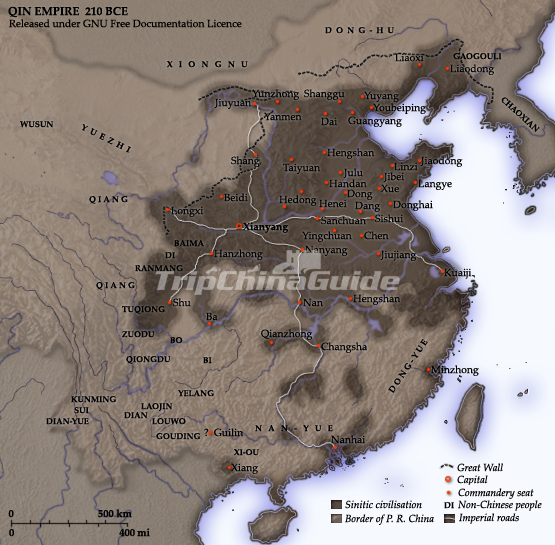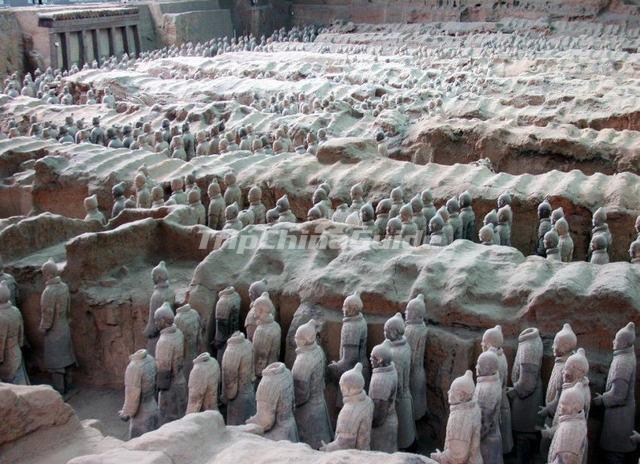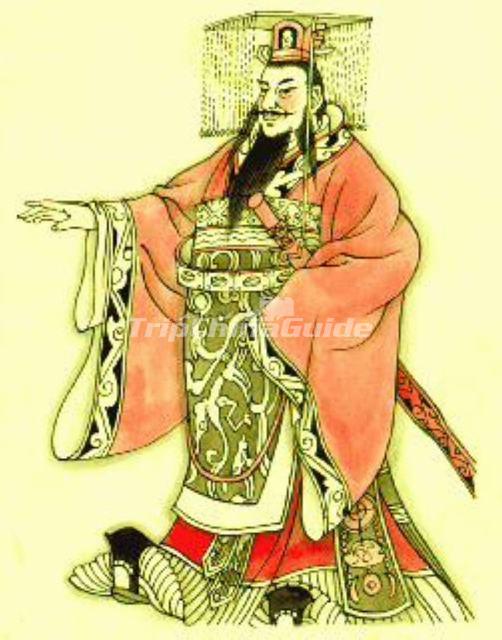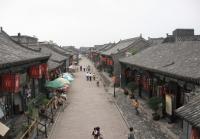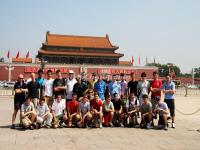Qin Dynasty
The Qin came to power in 221 B.C. They were one of the western states that existed during the Warring States Period. They conquered the other Warring States, unifying China for the first time. Their leader named himself the First Emperor, or Shi huangdi, thus beginning the tradition of having emperors for rulers. The Qin, while not the most culturally advanced of the Warring States was militarily the strongest. They utilized many new technologies in warfare, especially cavalry. The Qin are sometimes called the Ch'in, which is probably where the name China originated.
The Qin made many changes that were meant to unify China and aid in administrative tasks. First, the Qin implemented a Legalist form of government, which was how the former Qin territory had been governed. The area was divided up in 36 commanderies which were then subdivided into counties. These commanderies had a civil governor, a military commander, and an imperial inspector. The leaders of the commanderies had to report to the Emperor in writing. The Legalist form of government involved rewards and punishments to keep order. Also, the state had absolute control over the people, and the former nobility lost all of their power. The nobility were also transplanted from their homes to the capital. Groups were formed of units of five to ten families, which then had a group responsibility for the wrongdoings of any individual within the group.
The achievements of the Qin are numerous. They standardized the language and writing of China, which had varied greatly from area to area during the Warring States Period. This was done partially out of a need to have a consistent way to communicate across the country; administrators had to be able to read the writing of the commandery to which they were sent. Also, currency became standardized as a circular copper coin with a square hole in the middle. Measurements and axle length were also made uniform. This was done because the cartwheels made ruts in the road, and the ruts had to all be the same width, or carts with a different axle length could not travel on them. Many public works projects were also undertaken. A Great Wall was built in the north, to protect against invasions. Roads and irrigation canals were built throughout the country. Also, a huge palace was built for Shi huangdi. The Qin are also famous for the terra cotta army that was found at the burial site for Shi huangdi. The army consisted of 6,000 pottery soldiers that protected the tomb. They may be a replacement for the actual people who had previously been buried with the rulers.
Despite all of these accomplishments, Shi huangdi was not a popular leader. The public works and taxes were too great a burden to the population. It seemed that Shi huangdi could not be satisfied. Also, the nobility disliked him because they were deprived of all their power and transplanted. Finally, he banned all books that advocated forms of government other than the current one. The writings of the great philosophers of the One Hundred Schools time were burned and more than 400 opponents were executed.
The Qin rule came to an end shortly after the First Emperor's death. Shi huangdi had only ruled for 37 years, when he died suddenly in 210 B.C. His son took the throne as the Second Emperor, but was quickly overthrown and the
Han dynasty began in 206 B.C.
Emperors of the Qin Dynasty
Title | Given Name | Period of Reign | ||
Qín Shǐ Huáng | 秦始皇 | Zhèng | 政 | 221–210 BC |
Qín Èr Shì | 秦二世 | Húhài | 胡亥 | 209–207 BC |
Qín Sān Shì | 秦三世 | Ziyīng | 子嬰 | 207 BC |







